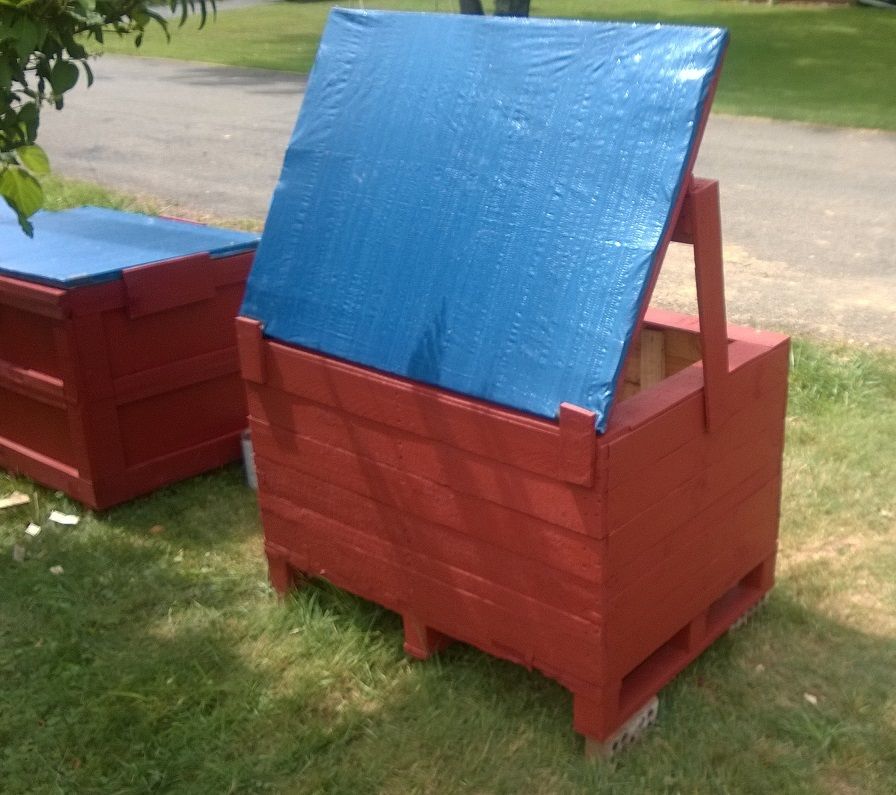I want to thank everyone that contributed to my last design iteration for the shipping crate conversions. I have access to thousands of crates and a green solution is needed. I'm an engineer, and I redesigned these crates/coops based mainly on inputs I received on this forum. Please be mindful of the price of these coops ($70 to house 4 egg-laying chickens). It's my understanding that chicken-housing can cost $150 per chicken (or please tell me what it is). The price I offer is $17.50 per chicken. I appreciate any input you offer on strengths/weaknesses. This is not an advertisement and I leave no contact information. thank you.
8 Sq Ft Chicken Coop Description
These chicken coops are sturdy, well designed, and crafted with pride from recycled heavy-duty shipping-crates after only one use. The crate floor plan is 42 inch x 30 inch (about 8 sq ft) and the inside height is 22 inch. Coops weigh about 90 pounds.
Design Features (ref pictures)
o Lid that pivots from the rear of the coop. Ventilation is adjusted by tilting lid from the front and placing spacer blocks underneath the front of the lid.
o Awning over the doorway that holds the lid firmly in fully open position. The awning rotates into position as shown in pictures.
o Water proof tarp-covering on the lid that’s easy to clean.
o Trim around the inside of the crate-opening that keeps out the water.
o 2 roosting poles.
o Corrugated polypropylene liner that covers the floor. Use horse bedding for easy clean-up job (see pictures).
o ¾ inch drainage holes in floor near the corners.
The coop has 2 coats of exterior “barn red” latex paint.











8 Sq Ft Chicken Coop Description
These chicken coops are sturdy, well designed, and crafted with pride from recycled heavy-duty shipping-crates after only one use. The crate floor plan is 42 inch x 30 inch (about 8 sq ft) and the inside height is 22 inch. Coops weigh about 90 pounds.
Design Features (ref pictures)
o Lid that pivots from the rear of the coop. Ventilation is adjusted by tilting lid from the front and placing spacer blocks underneath the front of the lid.
o Awning over the doorway that holds the lid firmly in fully open position. The awning rotates into position as shown in pictures.
o Water proof tarp-covering on the lid that’s easy to clean.
o Trim around the inside of the crate-opening that keeps out the water.
o 2 roosting poles.
o Corrugated polypropylene liner that covers the floor. Use horse bedding for easy clean-up job (see pictures).
o ¾ inch drainage holes in floor near the corners.
The coop has 2 coats of exterior “barn red” latex paint.
Last edited:






